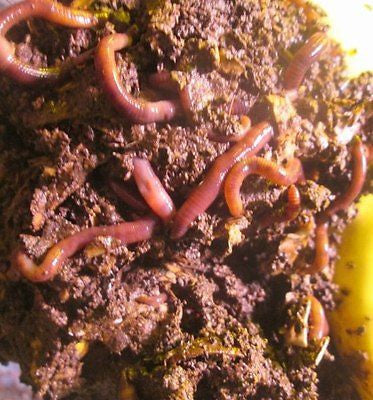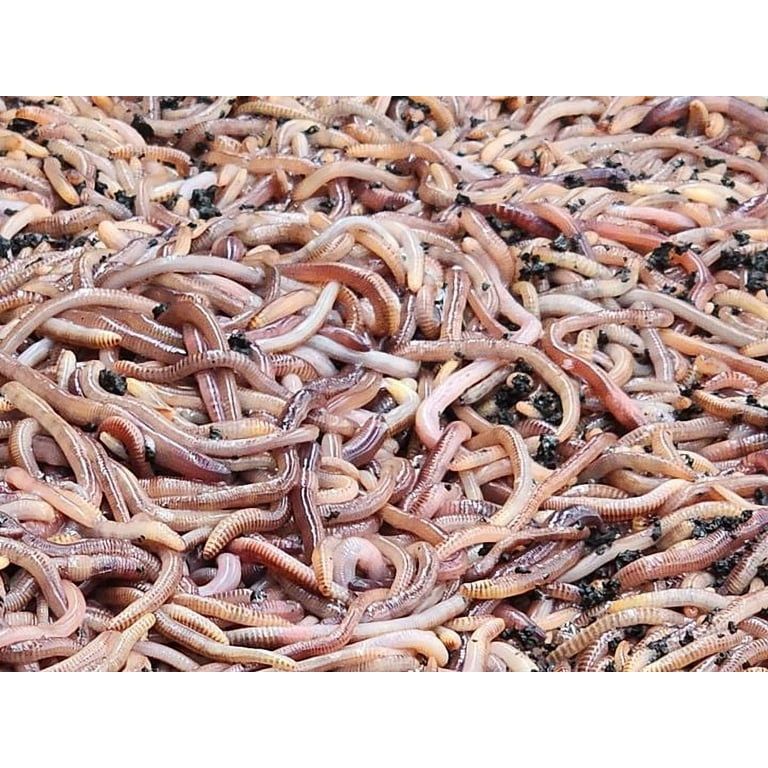The Function of Red Wigglers in Sustainable Horticulture
The assimilation of red wigglers right into lasting gardening practices offers an engaging method to improving soil wellness and reducing organic waste. The ramifications of making use of red wigglers expand beyond mere composting; their function in forming a much more lasting future warrants a much deeper exploration of their benefits and useful applications.
Recognizing Red Wigglers
Red wigglers, clinically known as Eisenia fetida, are a types of earthworm renowned for their function in sustainable gardening and composting techniques - red wigglers. These worms thrive in breaking down raw material, making them specifically effective in transforming kitchen scraps and backyard waste right into nutrient-rich garden compost. Unlike typical earthworms, red wigglers have a greater resistance for varying moisture degrees and can grow in atmospheres with bountiful natural product
(red wigglers near me)Characteristically, red wigglers are smaller sized than their earthworm counterparts, normally measuring between 3 to 4 inches in length. They possess a reddish-brown coloration and have a fractional body structure that assists in their burrowing and feeding tasks. These organisms are hermaphroditic, indicating each individual possesses both male and female reproductive organs, which permits reliable populace development under optimum conditions.
The habitat preferences of red wigglers consist of damp, dark settings rich in organic web content, such as garden compost containers or worm farms. Their eco-friendly duty expands past composting; they are integral in freshening the dirt and assisting in nutrient biking, which eventually adds to much healthier garden ecological communities. red wigglers. Comprehending the biology and habits of red wigglers is important for those looking for to implement effective vermicomposting in lasting horticulture
Benefits of Vermicomposting
Vermicomposting deals various benefits that boost sustainable horticulture methods and add to ecological wellness. One of the primary advantages is the transformation of organic waste into nutrient-rich garden compost, which improves dirt structure and fertility. The castings produced by red wigglers are packed with helpful microorganisms and essential nutrients, making them a superb all-natural fertilizer.
Furthermore, vermicomposting significantly minimizes land fill waste. By diverting kitchen area scraps and backyard waste from landfills, this method not only lessens methane exhausts-- a powerful greenhouse gas-- yet likewise advertises a circular economic climate, where waste is repurposed as a resource.
One more advantage is the improvement of dirt aeration and drainage (red wigglers). The burrowing task of red wigglers develops networks in the soil, enabling air and water to permeate even more quickly, thus promoting a healthier origin system for plants
Additionally, vermicomposting can be done on a small range, making it accessible for urban garden enthusiasts and those with limited room. This approach motivates environmental stewardship and awareness, as people become much more involved with their waste management methods. Inevitably, vermicomposting stands for a lasting, effective, and environment-friendly strategy to horticulture that profits both plants and the world.
How to Start Vermicomposting
Beginning your very own vermicomposting system can be a gratifying venture that boosts your sustainable horticulture practices. To begin, choose an ideal container, such as a plastic container or wood box, with good water drainage and ventilation. The size will certainly depend upon the quantity of kitchen area scraps you produce; a bin of 10-14 gallons typically is adequate for a home.
Following, prepare the bedding material. Shredded paper, cardboard, and coconut coir are superb choices, offering a comfy habitat for the red wigglers. Go for a bedding deepness of regarding 4-6 inches, which should be wet yet not soggy.
Once the bed linen is established, introduce your worms. Red wigglers (Eisenia fetida) are one of the most ideal for composting. Start with around one extra pound of worms for every 2-3 extra pounds of cooking area scraps weekly.
Begin adding kitchen area waste, staying clear of meat, milk, and oily foods, as these can bring in bugs and create smells. Consistently keep an eye on the bin's dampness levels and temperature level, guaranteeing it remains within the ideal range for worm activity. With these first actions, you'll be well on your way to creating nutrient-rich garden compost for your garden.
Keeping a Healthy Worm Container
A prospering worm bin requires constant care and focus to keep an ideal setting for the red wigglers. Secret factors to keep an eye on include dampness degrees, temperature, and food supply. Maintaining a moisture level akin to a wrung-out sponge is important; also much water can cause anaerobic conditions, while inadequate can dry out the worms.
Temperature is also important, as red wigglers flourish in a variety of 55 to 77 degrees Fahrenheit. Severe temperatures can worry the worms, possibly causing death. Putting the bin in a climate-controlled area or using insulating materials can aid manage temperature level variations.

Last but not least, oygenation is important. Regularly transforming the bed linen and making use of a fork or shovel can stop compaction and promote air movement, making certain a healthy and balanced, thriving setting for the red wigglers. By adhering to these techniques, gardeners can keep an efficient worm container that supports lasting gardening initiatives.
Influence On Soil Wellness
Enhancing dirt health with the usage of red wigglers is a basic aspect of lasting horticulture. By eating organic matter, red wigglers break down complicated products into simpler substances, a procedure recognized as vermicomposting.

(Lake Rhodhiss Worms)Research studies have actually revealed that soils enhanced with worm castings exhibit enhanced microbial task and boosted fertility, causing greater crop yields. By integrating red wigglers into horticulture techniques, garden enthusiasts not only enrich their soil however likewise contribute to a more read here lasting farming system, stressing the interconnectedness of dirt health and environmental stewardship.

Final Thought
In conclusion, red wigglers considerably contribute to lasting horticulture with their efficient vermicomposting techniques. By advertising waste reduction and promoting a circular economic climate, red wigglers emerge as vital elements in environment-friendly gardening campaigns, underscoring their vital duty in environmental sustainability.